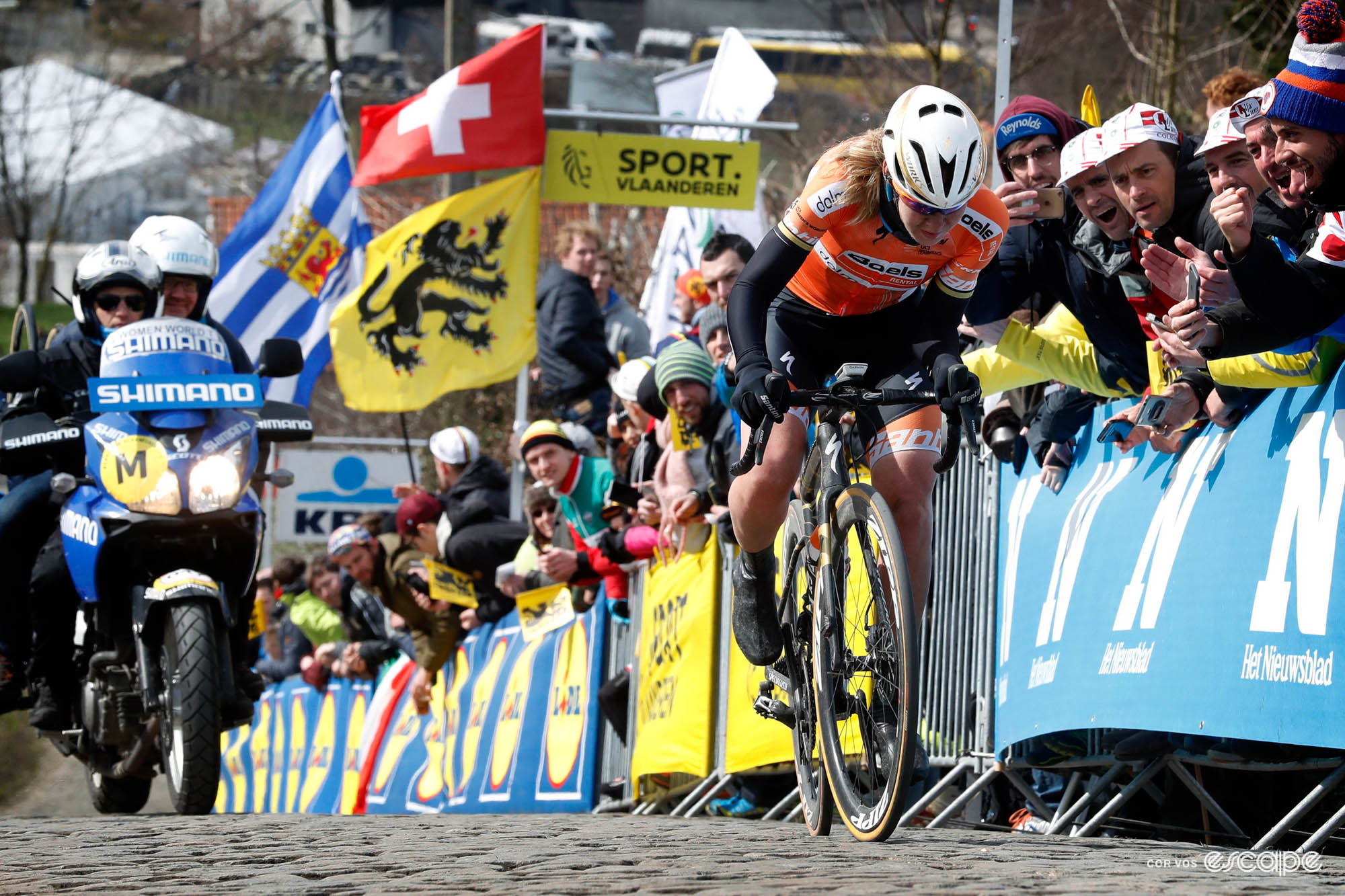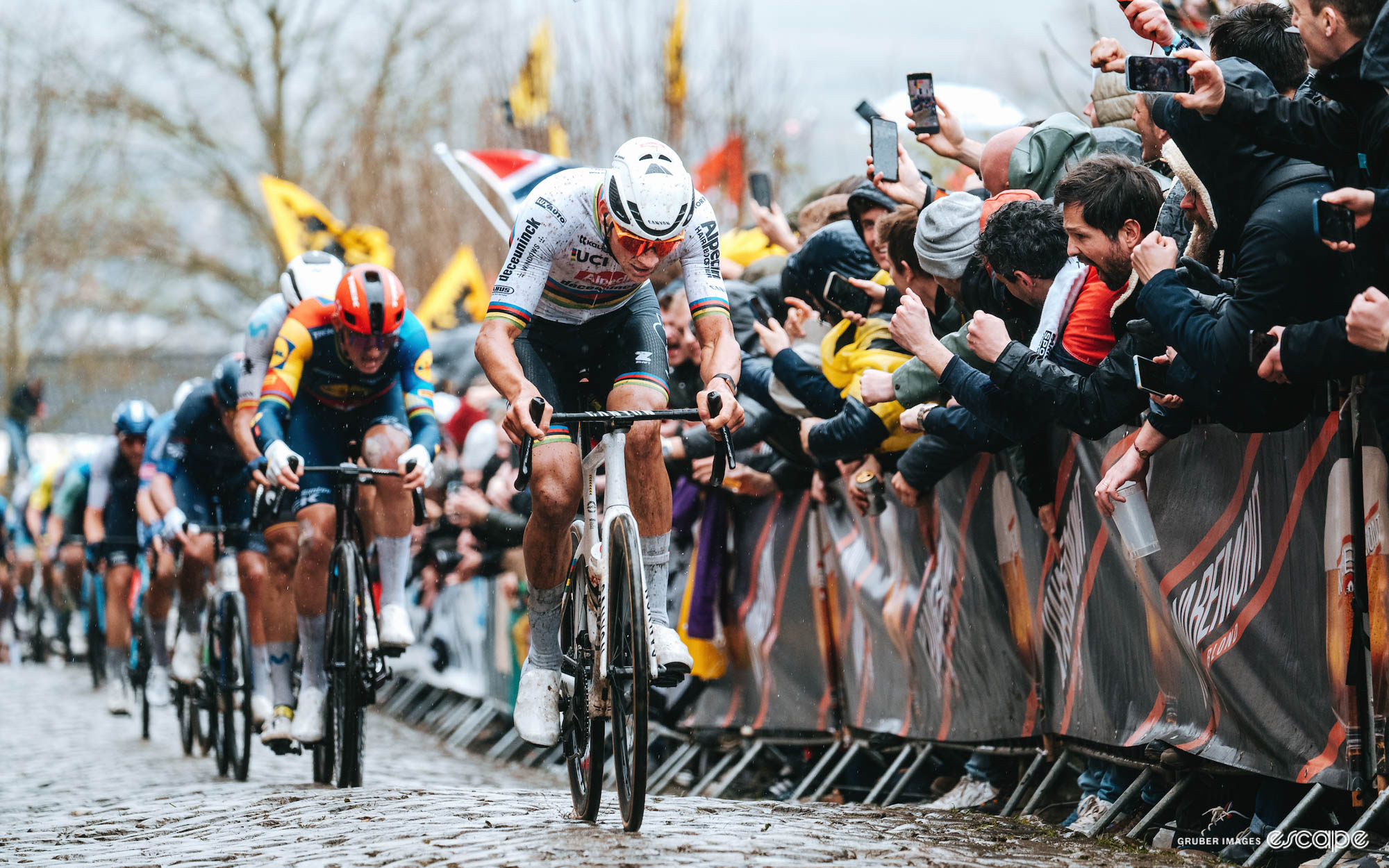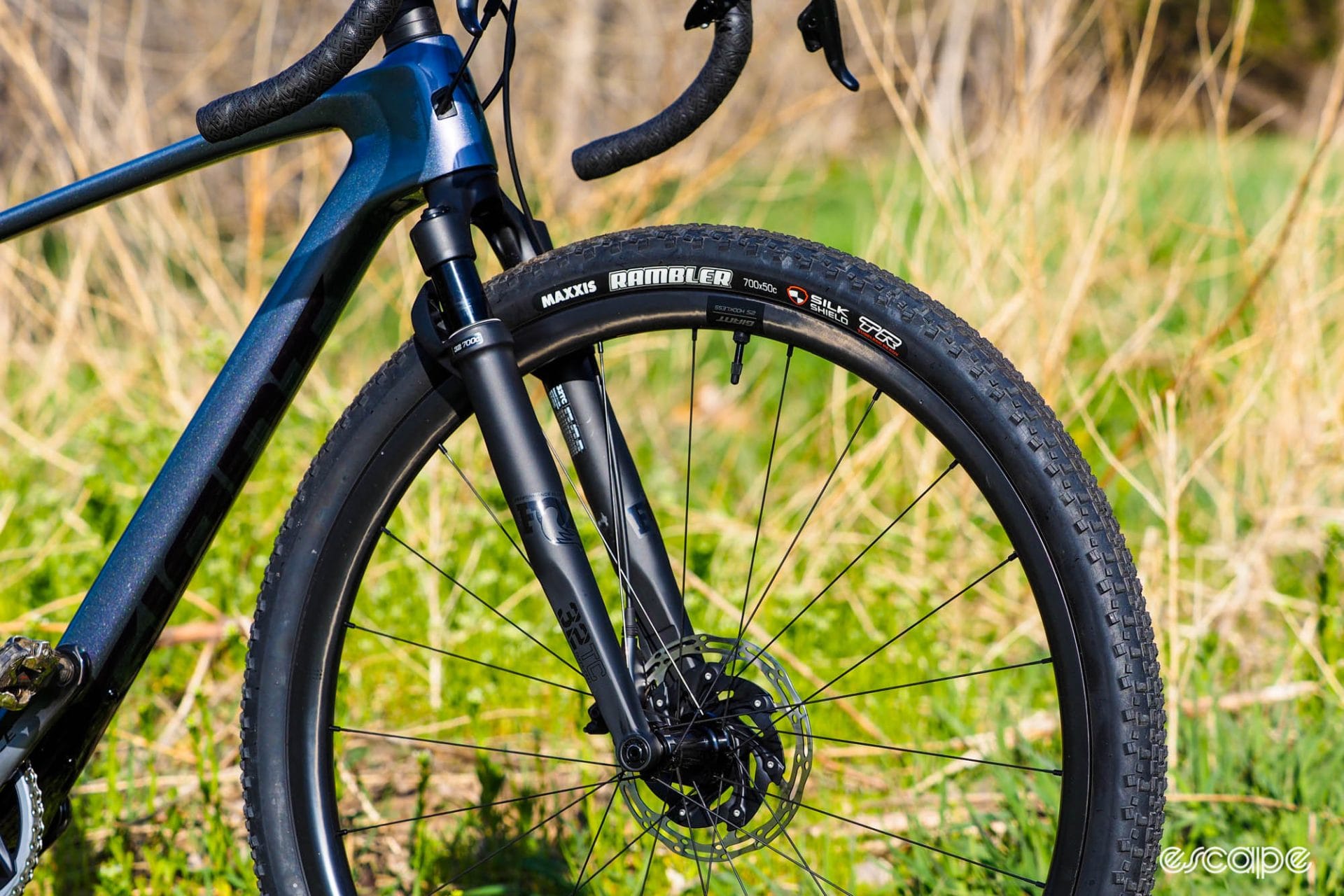Every Tour of Flanders is defined by a decisive move at some point or another, either at the end of hours of grinding attrition or from an explosive acceleration. In the slop and awe of this year’s edition, it was the Koppenberg – 44 km out, more than an hour’s racing from the finish – that would prove to be the deciding factor in both the men’s and women’s race. Part of that was informed by the conditions, which made the steep rough cobbles a battle for both traction and dignity, but according to four past winners who spoke to Escape Collective, it reveals a longer-term trend than one afternoon’s rain. Over the last decade of the race, it’s been harder for longer, with moves going earlier, with a range of factors informing that shift.
For veteran Norwegian Alexander Kristoff – the oldest past winner of the race still competing – there’s a clear trend at play. He won the race in 2015 from a two-person breakaway that went clear on the Kruisberg, 26 km from the finish, but says today that “the final starts a bit earlier – we race harder for a longer time.” There are factors both micro and macro to that. When he first rode the race in 2012, fear of the unknown was a contributing factor; a one-year blip: “it was the first year with the new track – they changed the finish to Oudenaarde from Ninove, and in the start people were really scared with the Kwaremont/Paterberg combo. So the first year it was quite late that we went full gas.” Now, the course is familiar but riders are looking for opportunities further out. “The final, year by year, comes earlier and earlier,” Kristoff said. “That’s the biggest change for me.”

2021 winner Kasper Asgreen (Soudal-Quick Step) is a more recent force in the race, but he agrees with his Scandinavian colleague about the aggression starting earlier. “I remember in ‘19 [when Asgreen finished second - Ed.] I opened up the race early and that was the first time on the Paterberg, the second time after the Kwaremont. Nowadays that’s the full final,” he said with a laugh. “It’s definitely changed a lot. The final is a lot longer and if you want to anticipate, you need to go from very, very far.” (‘The final’ is an exceptionally nebulous term at the best of times, but in Asgreen’s definition, it seems to apply to the point at which the decisive move is made – sometimes at 1 km, sometimes much more, but this year would have fallen on the Koppenberg in both races.)
It’s not just the way that the day is raced that defines the progress in Tour of Flanders, but the shifting norms within the sport as a whole; the earlier aggression is informed by evolutions both technical and nutritional. For Fabian Cancellara – a three-time winner between 2010 and 2014 – it’s indicative of broader trends in cycling and society itself. Modernisation, Cancellara believes, is part of a detail-oriented approach that spreads beyond the bike. “This is just life – it’s not just in our sport, although it has modernised the whole cycling world,” Cancellara mused in Antwerp yesterday. As it applies to cycling, you can see it in “changes with nutrition, with rider dynamics, with performance – it’s the evolution of more details.” Now that he’s retired and is running his Tudor Pro Cycling Team, it’s a necessary part of the team’s approach in order to remain competitive.

Nutritional changes – particularly the increased amount of carbohydrates that nutritionists are now getting into the riders – are cited as a major factor across the board. “We are eating a lot more carbohydrates and sugars,” Asgreen explained, contrasting that quantum leap to the “smaller, incremental evolutions” in bike tech and equipment. “For me, that’s been relatively easy – I’m lucky, my stomach handles whatever I give it.” He also handles other things expertly, like the surprising grace with which he posed for photos with two mascots in deer suits immediately after our conversation.
Kristoff, half a generation older than Asgreen, has been around for much longer and experienced an even bigger shift in the sport. “I think because of aerodynamics and people are better fuelling, they start the final earlier also and can hold away all the way to the finish. So that maybe is also a part of how the racing is changing a bit,” the Norwegian told Escape Collective in Antwerp. But there has been an overall rising of the tide, too: a more competitive peloton, riding at a higher level all season long.
“The level is high, and I think the level is higher now than 10 years ago,” Kristoff explains. “There’s more people at a higher level all the time. Flanders is never an easy race, but I remember going to Oman, these races in the early years … the whole pack was on vacation and that’s not the situation anymore, in any race.” (I would be remiss if I didn’t point out that some Very Important Other Things once happened to Kristoff at the Tour of Oman ... but I digress.)

Against this backdrop – and paired with his age – perhaps it’s understandable that Kristoff’s results have dropped off somewhat. “I’m more or less in the same rhythm, but I haven’t won so much in this race since that one time,” he says with a laugh. The level of his rivals has risen, as has the competition for leadership honours within his team hierarchy – a factor that has the Stavanger Stallion eyeballing a first-ever altitude training camp to secure a position in this year’s Tour de France line-up.
In the women’s peloton, the level is rising too – more so, in fact, because of advances in wages, team budgets, and equipment. Anna van der Breggen, the 2018 winner of the women’s race with a number of top-10 finishes stretching back to 2012, is well-placed to observe this phenomenon; she’s now the sports director at the SD Worx-Protime superteam. “The teams got bigger, the things around [the sport] got bigger. Everybody has a bus now, a truck. Now everybody has more stuff, things are getting more professional,” Van der Breggen told Escape Collective prior to the women’s start in Oudenaarde. “So much has changed with training; so much has changed with materials development.”
But despite the shifting norms in the sport, there are some things that don’t change. The Tour of Flanders has long inspired a cultish devotion from cycling fans both Belgian and international – it has its own museum, and it’s broadly considered among the top two most anticipated one-day races in the sport. In 2024, that adoration of the event isn’t going anywhere. “This race was a race that means a lot to especially the Belgian people, even back then,” says Van der Breggen of the beginning of her 15-year relationship with the Tour of Flanders, both as a rider and in team management. “It’s crazy – in every town already on the road there are barbecues and people are already drinking beer. It’s like a celebration day. That’s really cool,” she said, smiling.

Because of that significance in the calendar, the Tour of Flanders is always going to be ridden hard, by riders who desperately want to win. “There’s evolution [in many ways] but not the way how we look at the sport, and how we handle it. The feeling for the riders, I think, didn’t change so much,” Van der Breggen said. “So much has changed with training, so much has changed with materials development – everything is changing of course, but that attitude for the riders will always stay – you always try to be the best, and find ways to be the best.”
Prior to the men’s race a few hours earlier, Fabian Cancellara had broadly the same point, but expressed it a bit differently with his "evolution of just more details," assessment. "That’s the dynamic of the sport at the moment,” he said, before breaking it down to the fundamentals. “In the end, it’s still one bike, two wheels, push the pedals.”
Did we do a good job with this story?



